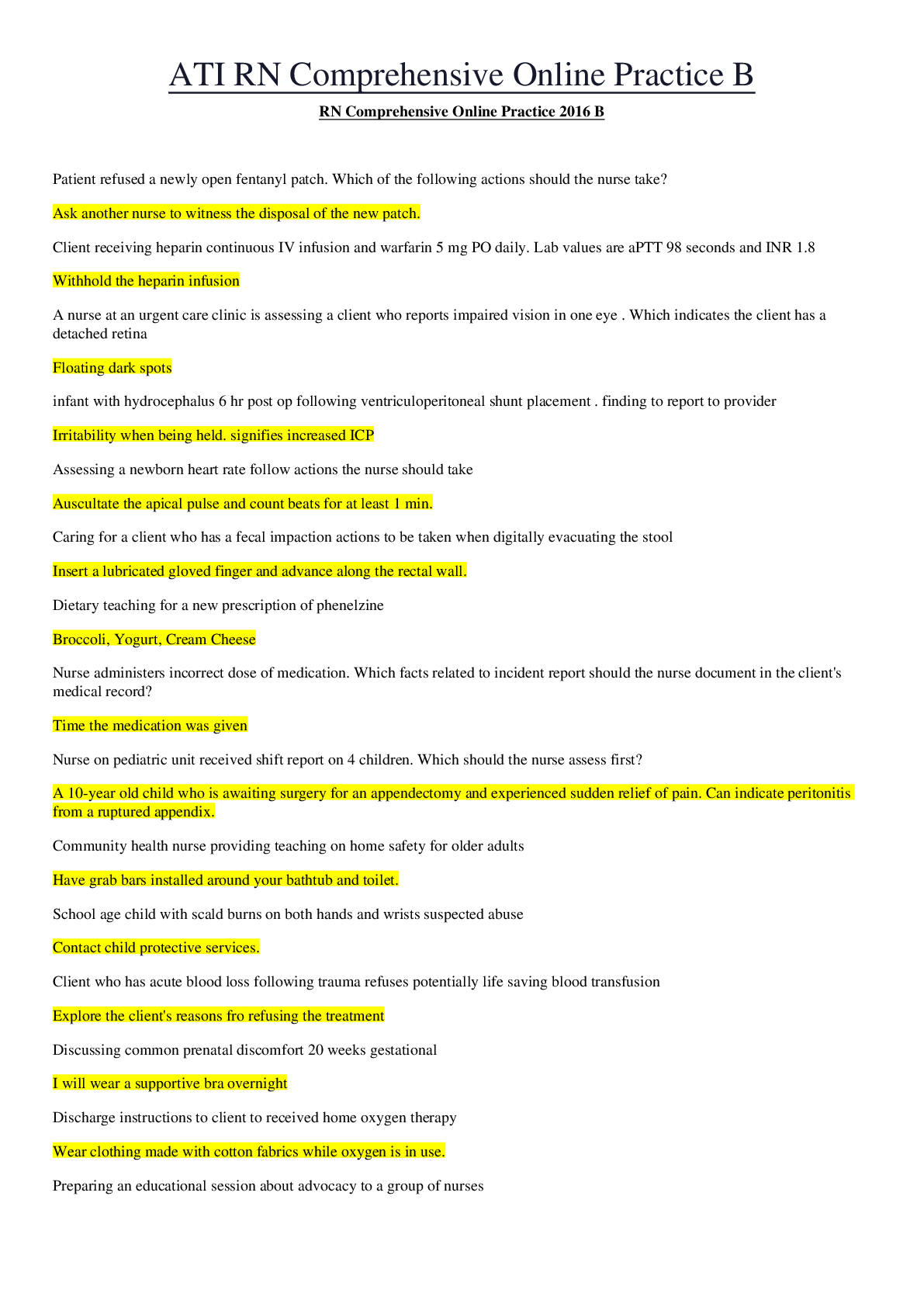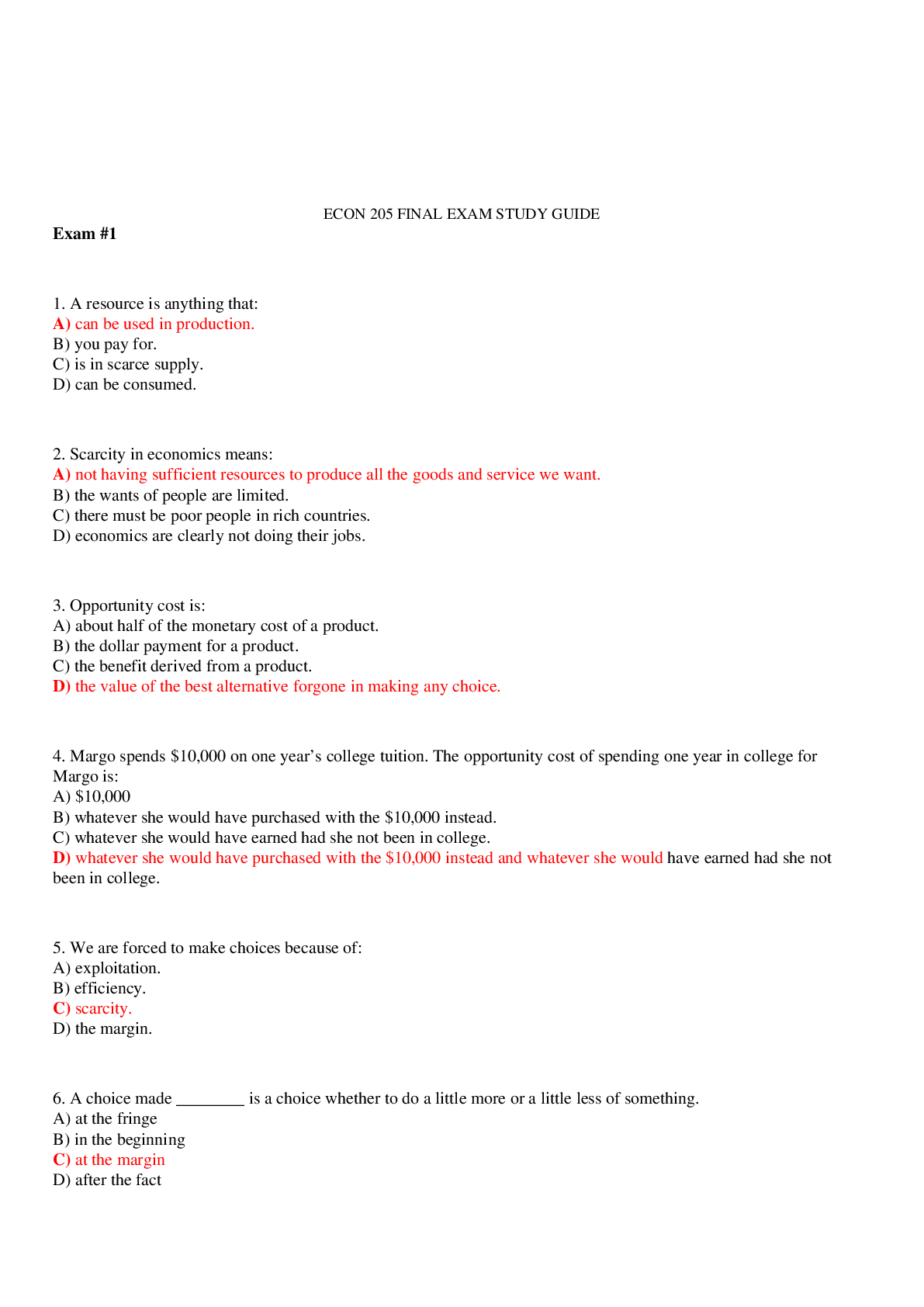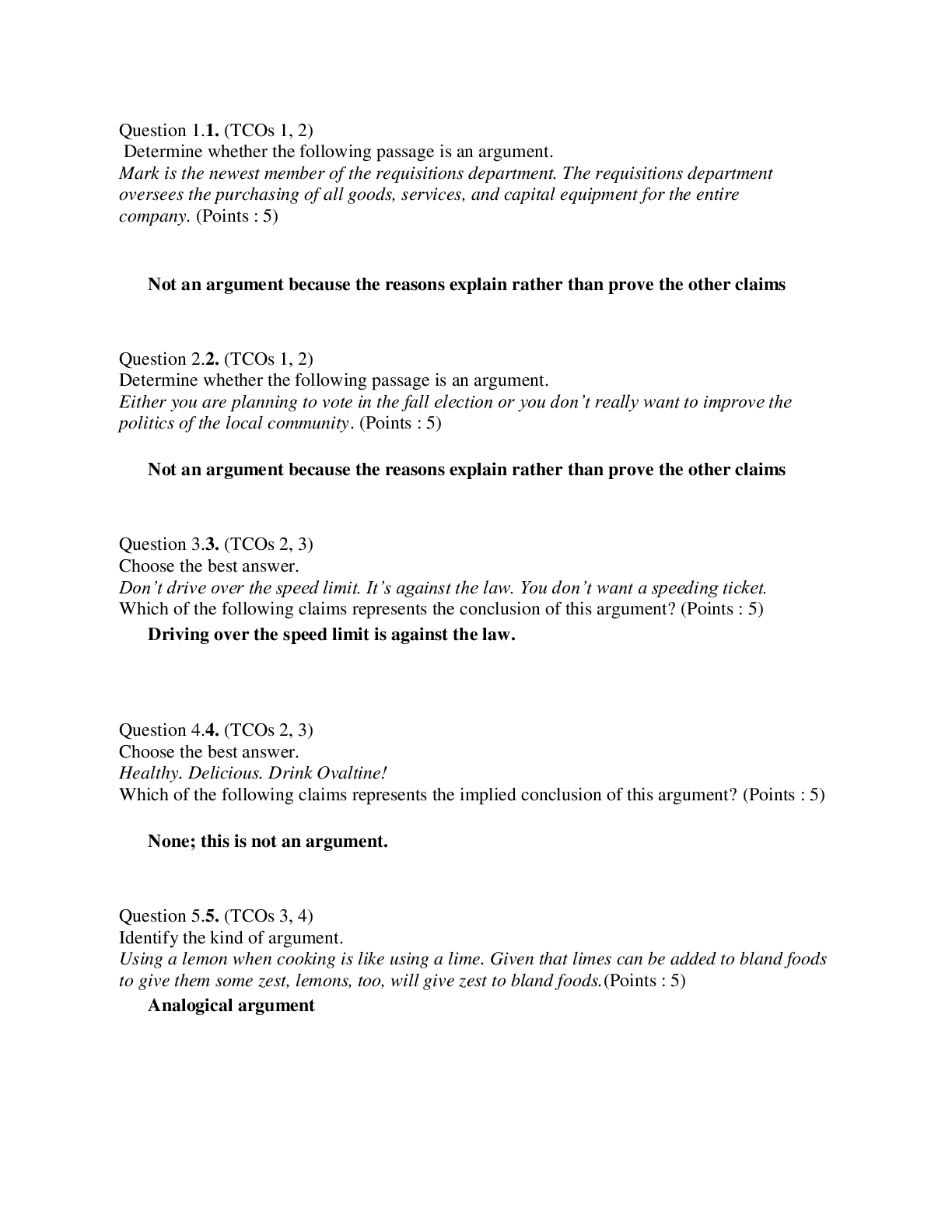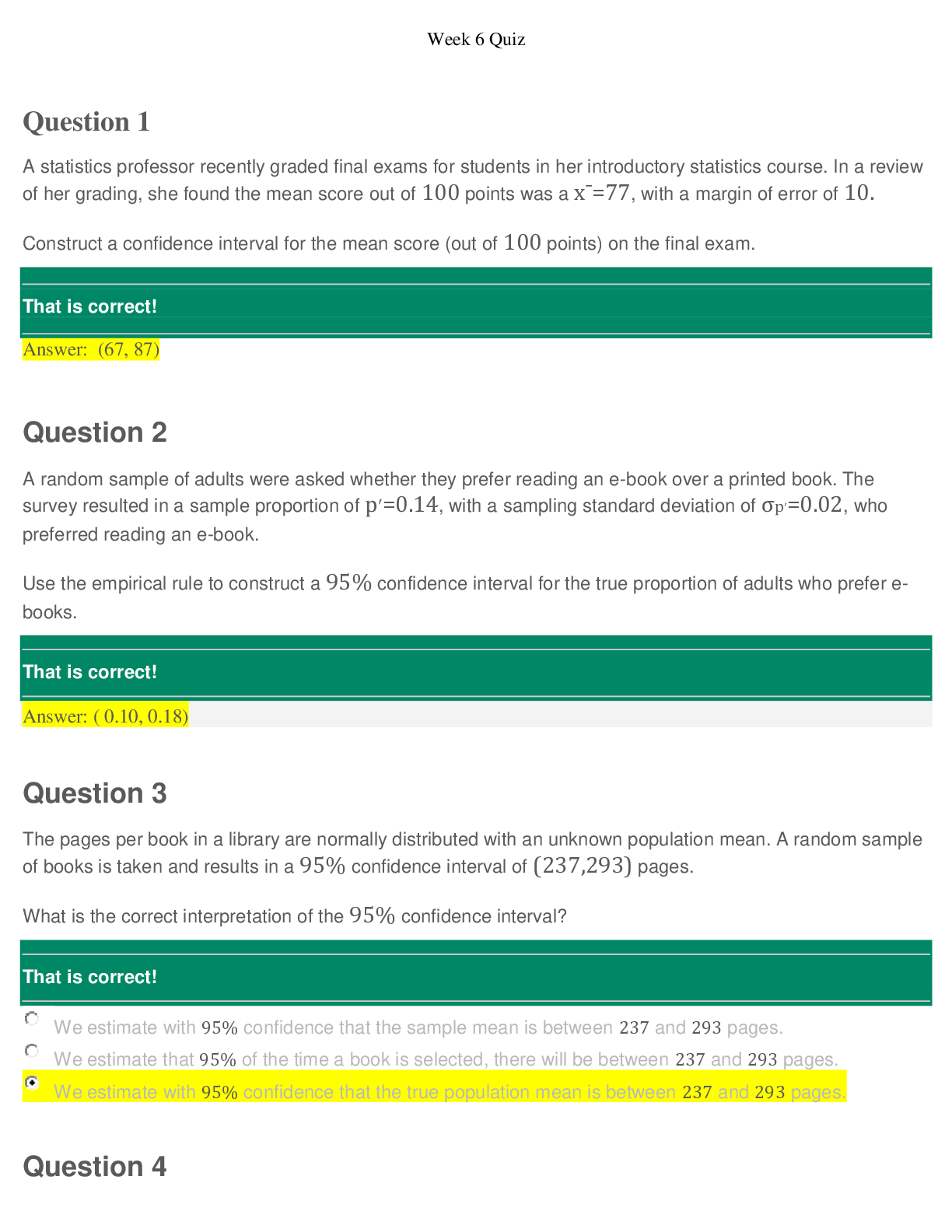*NURSING > EXAM > NR511 Final Exam Study Guide 2020 – Chamberlain College of Nursing | NR 511 Final Exam Study Guide (All)
NR511 Final Exam Study Guide 2020 – Chamberlain College of Nursing | NR 511 Final Exam Study Guide 2020
Document Content and Description Below
NR511 Final Exam Study Guide 2020 – Chamberlain College of Nursing WEEK 1 1. Define diagnostic reasoning 2. Discuss and identify subjective data? 3. Discuss and identify objective data?... 4. Discuss and identify the components of the HPI 5. What is medical coding? 6. What is medical billing? 7. What are CPT codes? 8. What are ICD codes? 9. What is specificity? 10. What is sensitivity? 11. What is predictive value? 12. Discuss the elements that need to be considered when developing a plan 13. Describe the components of Medical Decision Making in E&M coding 14. Correctly order the E&M office visit codes based on complexity from least to most complex 15. Discuss a minimum of three purposes of the written history and physical in relation to the importance of documentation 16. Accurately document why every procedure code must have a corresponding diagnosis code 17. Correctly identify a patient as new or established given the historical information 18. Identify the 3 components required in determining an outpatient, office visit E&M code 19. Describe the components of Medical Decision Making in E&M coding 20. Explain what a “well rounded” clinical experience means 21. State the maximum number of hours that time can be spent “rounding” in a facility 22. State 9 things that must be documented when inputting data into clinical encounter 23. What is the first “S” in the SNAPPS presentation? 24. What is the “N” in the SNAPPS presentation? 25. What is the “A” in the SNAPPS presentation? 26. What is the first “P” in the SNAPPS presentation? 27. What is the second “P” in the SNAPPS presentation? . 28. What is the last “S” in the SNAPPS presentation? WEEK 2 1. What is the most common type of pathogen responsible for acute gastroenteritis? 2. Assessing for prior antibiotic use is a critical part of the history in patients presenting with diarrhea. 3. Describe the difference between Irritable Bowel Disease (IBS) and Inflammatory Bowel Disorder (IBD) 4. Discuss two common Inflammatory Bowel Diseases 5. Discuss the diagnosis of diverticulitis, risk factors, and treatments 6. Identify the significance of Barrett’s esophagus. Average age of onset: Risk Factors: Signs/Symptoms: Diagnosis: Increases Risk of BE: Decreases Risk of BE: 7. What is best test for diagnosing GERD? 8. Risk factors of GERD: 9. How do we treat suspected GERD in patients with classic symptoms? 10. How do we treat suspected GERD in patients with “alarm symptoms”? 11. What are “alarm symptoms” for patients with suspected GERD? 12. Discuss the differential diagnosis of acute abdominal pain, work-up and testing, treatments - - - - - - - - - - - - - - - - - - - - - - - [Show More]
Last updated: 2 years ago
Preview 1 out of 69 pages

Buy this document to get the full access instantly
Instant Download Access after purchase
Buy NowInstant download
We Accept:

Reviews( 0 )
$20.50
Can't find what you want? Try our AI powered Search
Document information
Connected school, study & course
About the document
Uploaded On
Jul 29, 2020
Number of pages
69
Written in
Additional information
This document has been written for:
Uploaded
Jul 29, 2020
Downloads
0
Views
181








 – University of the People.png)

















